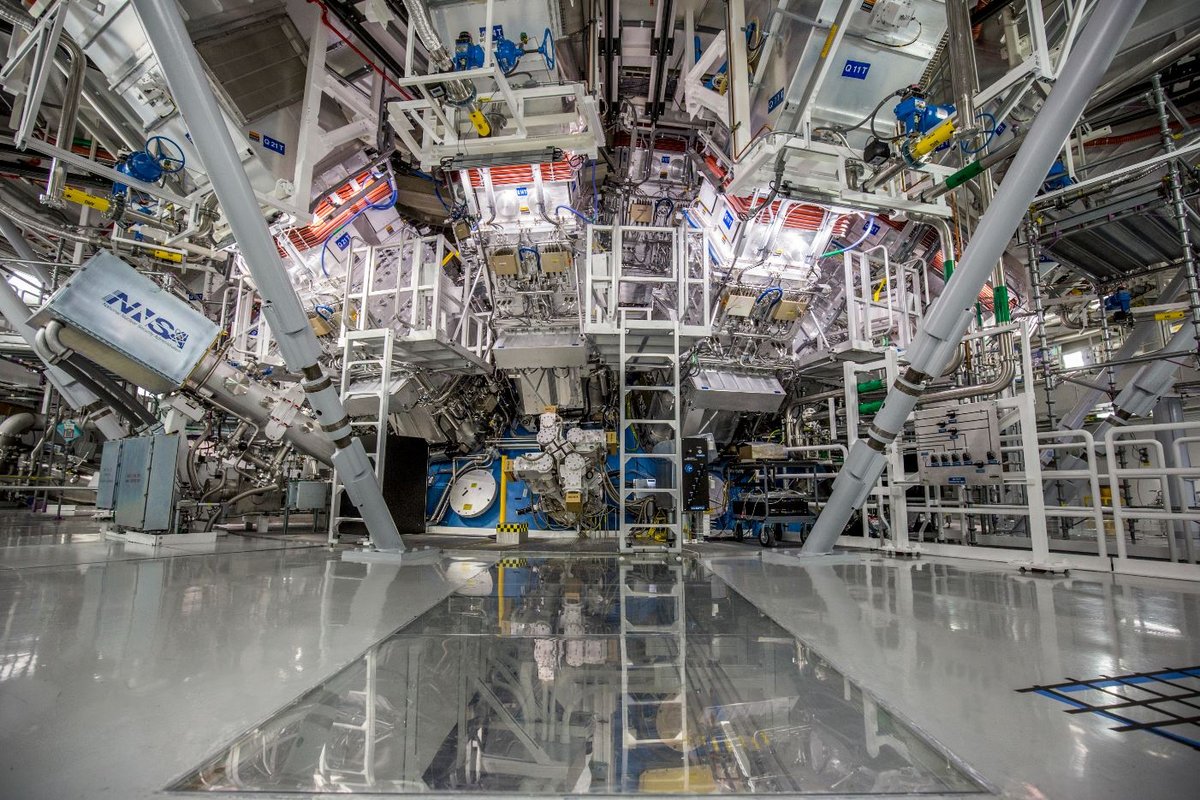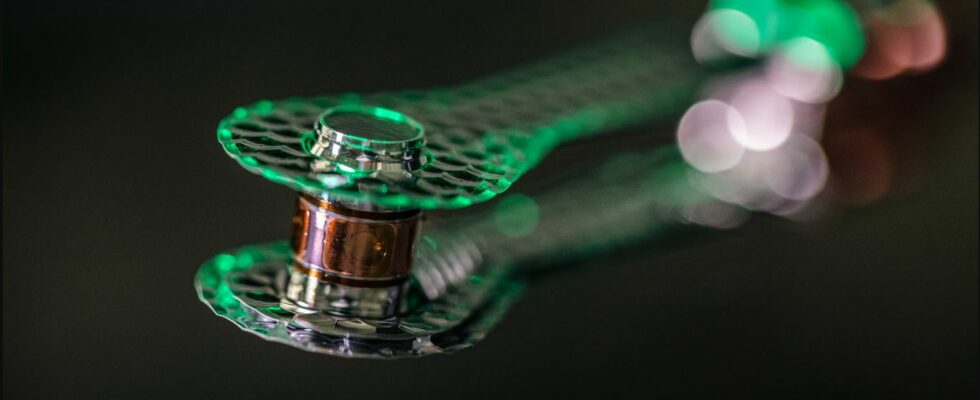It was the surprise of the end of the year 2022 : the team from the National Ignition Facility (United States) succeeded for the first time in obtaining a fusion reaction locally producing more energy than it absorbed. In 2023, success is less flamboyant, but just as important: reproducing the experience.
In December 2022, the United States celebrated with great fanfare the very first nuclear fusion reaction with a positive gain (what we call the “ break even “). The system is installed at the Lawrence Livermore National Laboratory, and is part of the NIF (National Ignition Facility), used primarily to simulate reactions for nuclear weapons in the United States.
In this enclosure dedicated to research, a set of almost 200 lasers (192) bombards a 2 millimeter diameter ball containing isotopes of hydrogen with beams. These latter fuse and then form helium atoms, in a reaction which produces energy: the whole challenge of the technology is to generate a reaction which produces more energy than that which is injected by the lasers. This ” break even » or positive gain reached in 2022 had produced 3.15 Megajoules from a combined energy of 2 Megajoules from lasers.
We take the same and start again
If the results had attracted attention (and research funds), it was still necessary to verify all the parameters leading to this positive gain. Because without calling into question the measurement, the very principle of the scientific approach, for a new method, is based on the repeatability of the results. In this, the 2023 results have succeeded in showing that the technique is the right one.
Three times this year the NIF team managed to overcome breakeven and achieve positive gains, this summer and twice in October. With a record at the end of July, where the 2 Megajoules of the lasers made it possible to generate 3.88 Megajoules thanks to the fusion reaction. This is a significant result, because it shows that this gain was not the result of unexplained conditions, but the application of increasingly better documented principles.
Better understand reactions
Indeed, it should be noted that the first half of 2023 was complicated at the NIF, several experiments which should in theory produce positive gains turned out to be inconclusive (in June, scientists expected 3 Megajoules and measured 1.6 then 1, 7 Megajoules). Enough to refine the parameters and the search. Scientists have thus highlighted tiny variations when activating high-power laser beams. In particular, if one part hits the ball before the rest, the latter is very slightly unbalanced and the fusion reaction is imperfect.
Conversely, they estimate that if the synchronization were perfect, their experiment could produce up to 7 Megajoules, a positive gain of 3.5. And the lasers, at the end of the year, have normally been slightly improved to provide 2.2 Megajoules instead of 2. Other teams are working on the geometry of the ball containing the hydrogen isotopes, as well as the pregnant.

Progress in small steps
This progress, which can be seen as very slow, is closely monitored by institutes around the world. Nuclear fusion, despite decades of experience, enormous installations and increasingly better understood principles, is still in its infancy. It will not participate significantly in the generation of electrical energy for a few more decades (unless one or more private companies convert its promises as quickly as expected), despite progress and laudatory comments at the last COP28 . Nevertheless, these are significant advances, in particular for research… And 2023 has once again shown the lead that NIF and laser confinement have over other techniques in terms of gains.
As a reminder, other methods (such as Tokamaks, or Stellarators) make it possible to work on other aspects, such as the generation of fusion plasma over long periods of time, high power, record temperatures or practical cases of confinement. and conversion of the energy obtained. Advances such as those of the NIF, repeated and repeatable, make it possible to consolidate results expected for sometimes more than 30 or 40 years. “ Harnessing fusion energy is one of the technological challenges of the 21st century », Estimated for her part the American Secretary (Minister) of Energy, Jennifer Granholm.
Source : CNN

23